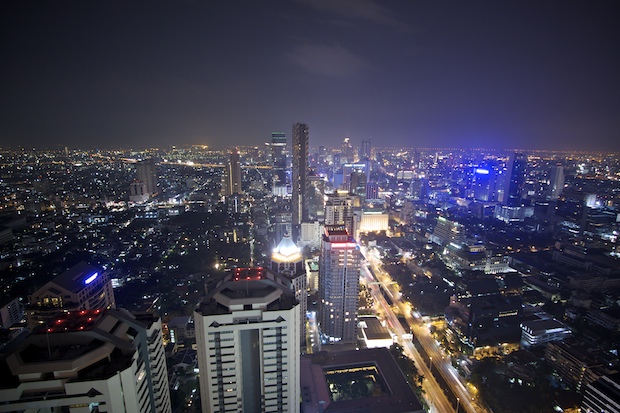I was attempting to write a happy little entry about art and Naoshima, but it’s hard to think about art issues when you’re sitting at home watching increasingly frightening Twitter reports come in from Bangkok. Especially when a good friend lives there with her husband and their one-month-old baby.
“Central World Mall on fire” reads one Tweet.
Isn’t that near their home? I think to myself. Google maps isn’t much use, since I can’t remember the name of their building.
Power outages. Television station on fire. Media taken over by government forces. Reports of phones not working. Curfew in effect. All foreigners asked to carry identification. People looting the now-burning mall. The American embassy evacuated. Twitter can be news/gossip overload at times. But astonishingly quick.
Finally it’s too much, and I call. She’s there. She tells me that she was on the first floor of their building when the power went out, and had to carry her baby up thirty floors. The burning mall is five train stops away, but yes, they can see the burning television station from their window… just down the street. The Japanese embassy has been abandoned and its operations and staff moved to a hotel.
She sounds hopeful, strangely enough. Perhaps because their building is well guarded. But when I ask if the embassy has evacuation plans for them she’s dubious. If it comes to that, “we’ll probably be the last to leave,” she says.
And I’m struck by the fact that I’m on the phone with a friend who is watching a city burn from her living room, unable to leave and unsure of what’s going to happen next. We say awkward goodbyes, because what else can you do?
Art has power in the right times and the right places. It is a communicative power. But faced with days like this, when communication is only an exchange of bullets and flame, it seems a quiet voice in the storm.










